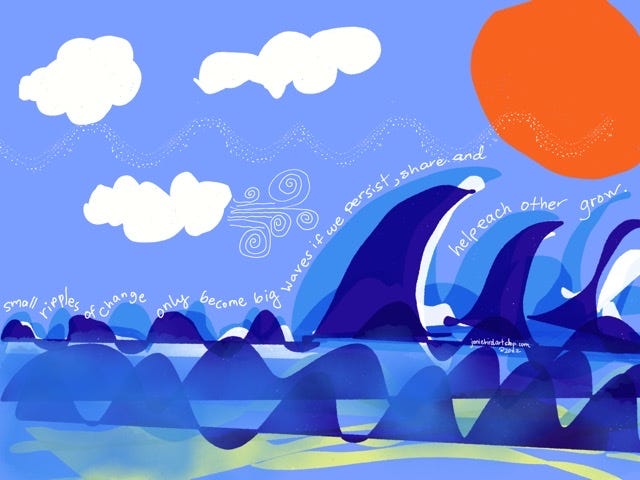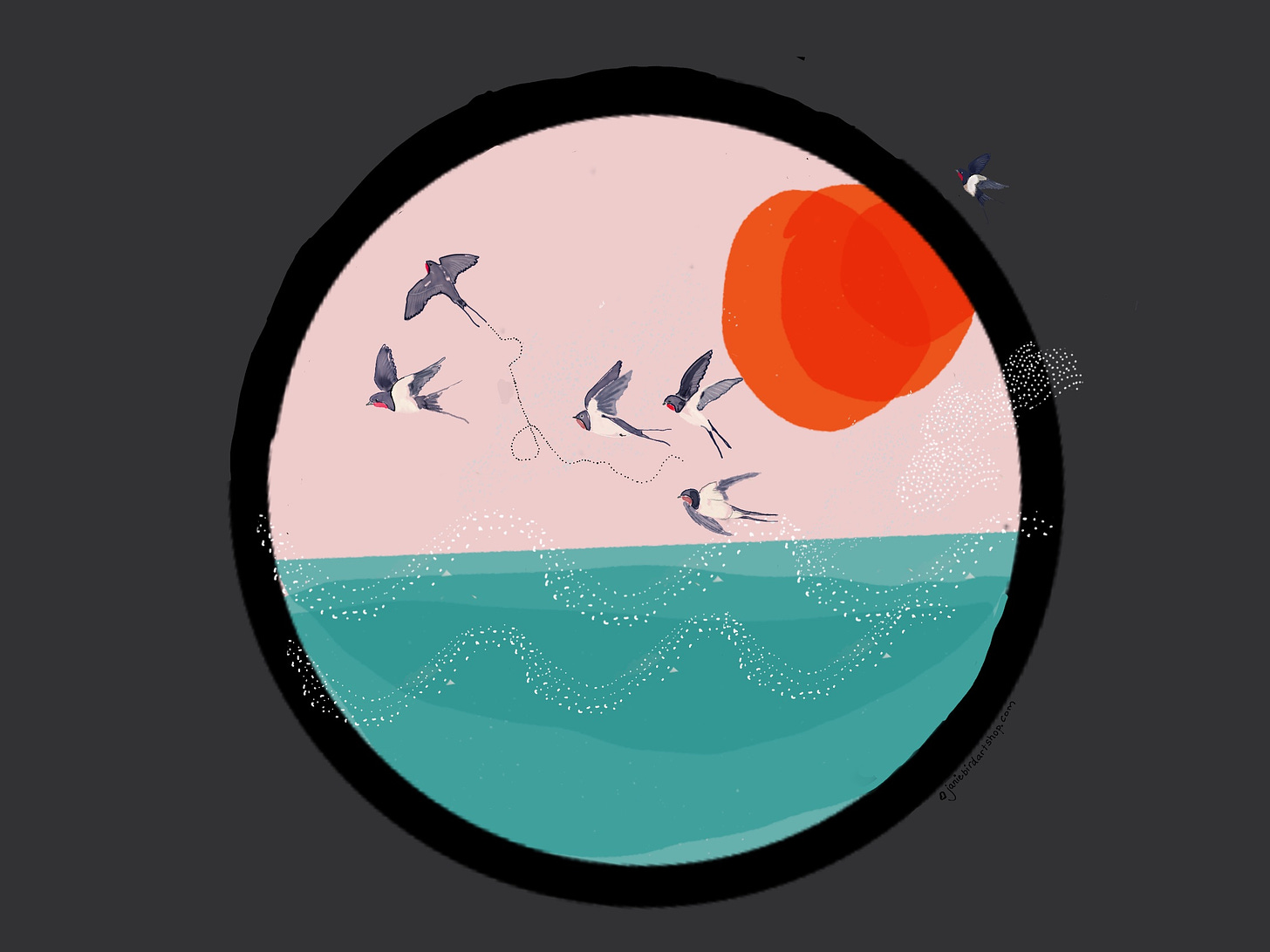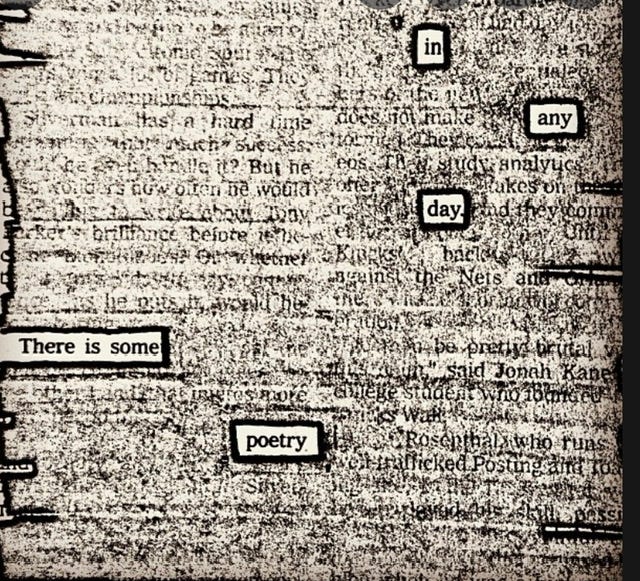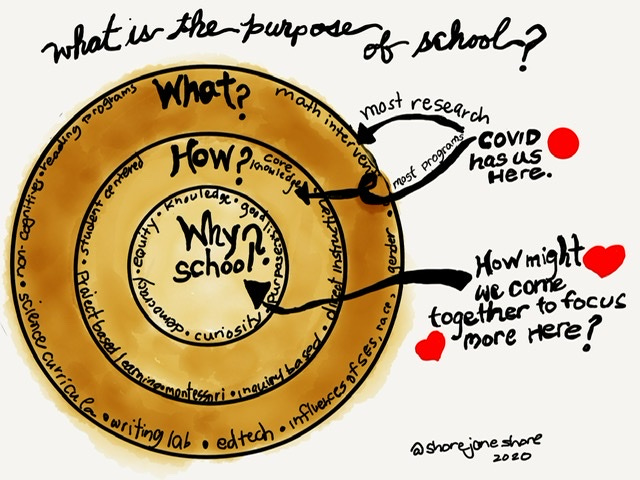Want to remake school? Think Like An Artist.
Reimagine school using an artistic mindset -experiment, draw inspiration from others, embrace ambiguity….and always ask yourself, “is this working?”
In recent years, the educational blueprint that schools have used for generations had to be turned upside down or thrown away. Teachers across settings and with all levels of experience have been creatively hacking a system that was ripe for growth and change even before the pandemic.
Thanks to this commitment to finding solutions, good things have been happening.
Schools and parents are more connected than ever.
Personalized learning is becoming a reality.
Students are guided through some classes at their own pace.
Technology is expanding to open unique virtual experiences for kids.
We are collaborating more than ever.
Small victories, unexpected discoveries and valuable innovations are happening out of necessity in classrooms around the country every day.
👉And that’s the challenge:
We are IN IT. And we need to harness and continue this remaking momentum so we don’t lose it. Small ripples of change can only become big waves if we persist, share and provide support to help each other grow.

And as we engage in gearing up for another school year, we are spending a lot of time in education coming up with what we “should” be or want to be teaching. But some things do not, and can not, have such specific pathways.
As we work to remake school for the modern world, we can sketch a map together, but we do not need to follow a set of pre-determined directions - we need a mindset.
The Big Idea
Question: Where can we find guidance to keep this remake school momentum going?
Answer: LOOK TO THE ARTISTS.
Artists learn to engage without preconceived directions by necessity. There’s no recipe for creating art. It’s only through doing that the process can begin to make sense. Professional artists engage in certain practices that could be translated to support a remake schooling mindset. We offer a few here.
Making Big Ideas Usable
10 (+1) Guiding Principles from Artists to Remake Schools
1. Simplify.
The goal is not to have nothing more to add; it’s to have nothing left to take away.
2. Build foundational skills and then use those tools and methods to get creative.
We need a foundation of knowledge, a discipline, and a way of thinking to build out by experimenting, exploring, questioning assumptions, and using imagination.
3. Grow community.
The secret to remaking is to build with people, not for them. And to put yourself in contact with others in the wave so that you can provide some wind.
4. Honor interests and give space to pursue them.
“You cannot depend on your eyes when your imagination is out of focus.” Mark Twain
5. Experiment—try and try again (celebrate failure).
6. Draw inspiration from the magic and brilliance of others.
“My poems are made up of bits and pieces of words I’ve taken from newspaper articles. My drawings are simply collages of points, lines, triangles, circles, and squares. I take Saul Steinberg’s faces, Otto Soglow’s hands, John Porcellino’s lines, Lynda Barry’s handwriting…I myself am simply a collage of my ancestor’s DNA, mixed with the hundreds of thousands of words and images and ideas that my brain has absorbed.” Austin Kleon
7. Constantly determine if things are “working” (formative assessment).
Ask others. Get input.
8. Find ways to share ideas and “measure” progress through authentic performances/a portfolio.
9. Welcome play at all ages.
If we need it, we should give ourselves permission to play, using a spirit of “what if…?”
10. Be comfortable with ambiguity.
Thinking like an artist by definition will take you beyond what you already know or understand. This state of not-knowing, of ambiguity, can be deeply uncomfortable–which ironically is the key to new thinking and remaking. Ambiguity is not the issue, –the problem is resisting the struggle. For an artist’s mindset, developing the ability to stay with this state of not-knowing and ambiguity is the cornerstone.
11. Use Visuals In, Of and For Learning (more here)
As we remake school, visuals can simplify the complexity.
Writer and lecturer in modern and contemporary art, Victoria Powell shares,
“The practice of drawing everyday makes you closely observe the world around you, makes you engage and really look. The American artist Ruth Asawa believed that art was essential to education from an early age no matter what you ended up doing. It’s makes you a better person.” Check out her blog The Gallery Companion.

This sort of thinking can apply to any field.
What is the “real work” that professionals in your field do? How can we bring that to remaking school?
I love this rubric, from the Columbus Museum of Art, that uses the above principles to guide creativity and artistic thinking in the classroom.
We must use the artist’s mind as we remake education together.






Nice! Like it!
You could add drawing to this list. The practice of drawing everyday makes you closely observe the world around you, makes you engage and really look. The American artist Ruth Asawa believed that art was essential to education from an early age no matter what you ended up doing. It’s makes you a better person.